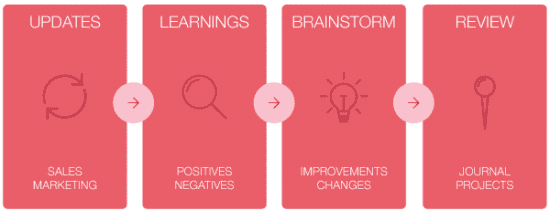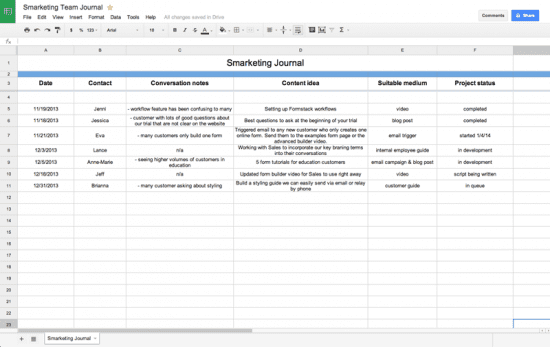Case study: How Formstack integrate their sales and marketing
In most companies, departments stay pretty close to their area of expertise. You each have your own superpowers and know your strengths. It’s difficult to get out of the comfort zone and not collaborate enough with other departments, but not doing so could be hurting your business. Without collaboration, you are missing out on vital perspectives that come from other aspects of your company.
In marketing, you’re constantly searching for ways to improve communication and see into the minds of your customers. You can send out customer surveys and take the chance that you’ll get a decent, honest response. However, most of the time it’s difficult to get good qualitative insight from a survey.
If you want to uncover hidden gems or issues your customers are facing, try collaborating with the secret agents of your business: your sales team.
What is Smarketing?
Our marketing and sales teams at Formstack work closely together. We’ve combined our powers for the greater good and created what we’ve termed the ‘Smarketing’ team (smart sales and marketing).
Every two weeks, we have a meeting to discuss new findings and brainstorm around ideas and upcoming projects. We’ve found every two weeks is a good timeframe for our small teams.
You can adjust the frequency of these meetings depending on the size of your company and workflow.This is the rough outline we tend to follow for our meetings:
- 1. Sales update / marketing update.
- 2. Positive/negative learnings from sales.
- 3. Brainstorm improvements (content, funnel adjustments, etc.).
- 4. Review Smarketing journal / cover upcoming projects.

Help me help you.
These meetings help create an internal feedback loop. The sales team can identify where customers are getting lost or confused in the funnel. Marketing can then make adjustments and build out content to alleviate those confusions. If the sales team notices customers are not understanding the copy on a web page, marketing can adjust. If they notice many customers are struggling with a complicated task, marketing can take that knowledge and create a helpful video.
Marketing can also help educate sales on the upcoming release of new features or products. The marketing team can walk the sales team through plans for a new release or campaign and gain feedback to make it more sales-friendly. Most of the time, sales will have a good idea of how customers will respond to changes.
We’ve done some recent price testing at Formstack, and our Smarketing meetings proved invaluable to communication and success.
The sales team provided wonderful insight into customer reaction, and the marketing team relayed timelines and constant updates for our sales team to follow.
This entire process helps address the needs of customers and also provides the sales team with the ammunition they need to sell at a high level. Now, it’s much easier to prioritize the most useful pieces of content that need created. But the loop doesn’t stop there. Once you’ve re-written that content or created that new video, keep an eye on analytics and future feedback to see how you can make your content even better, simpler, or easier for your customers.

No Sales team?
If your company doesn’t have a sales team, collaborate with your customer support team (you can call it ‘Suppor-marketing’). Any team that directly communicates with your customers is going to be able to provide ideas and insight.
Encourage this team to start a community Google Doc where they can quickly record ideas or suggestions after a customer interaction.
Collaboration doesn’t have to stop with just sales and marketing. Start introducing more team overlap in your company, and see how the quality of work improves.

Thanks to Lance Padgett for sharing his thoughts and opinions in this blog post. Lance is an SEO Specialist and Designer. He works at
Formstack in Indianapolis. They are an online form building application that allows users to build powerful forms and collect user data with no coding knowledge. You can follow him on
LinkedIn.





 Thanks to Lance Padgett for sharing his thoughts and opinions in this blog post. Lance is an SEO Specialist and Designer. He works at
Thanks to Lance Padgett for sharing his thoughts and opinions in this blog post. Lance is an SEO Specialist and Designer. He works at 



